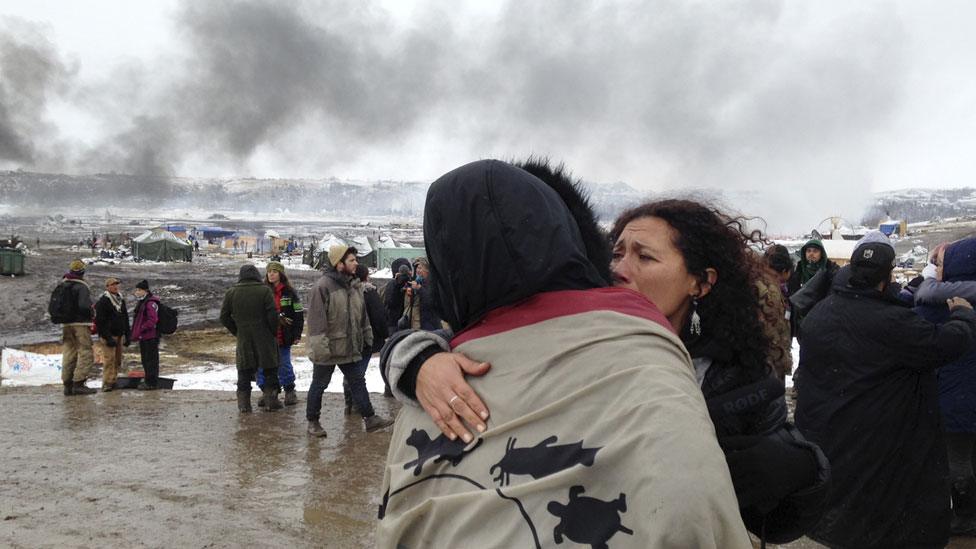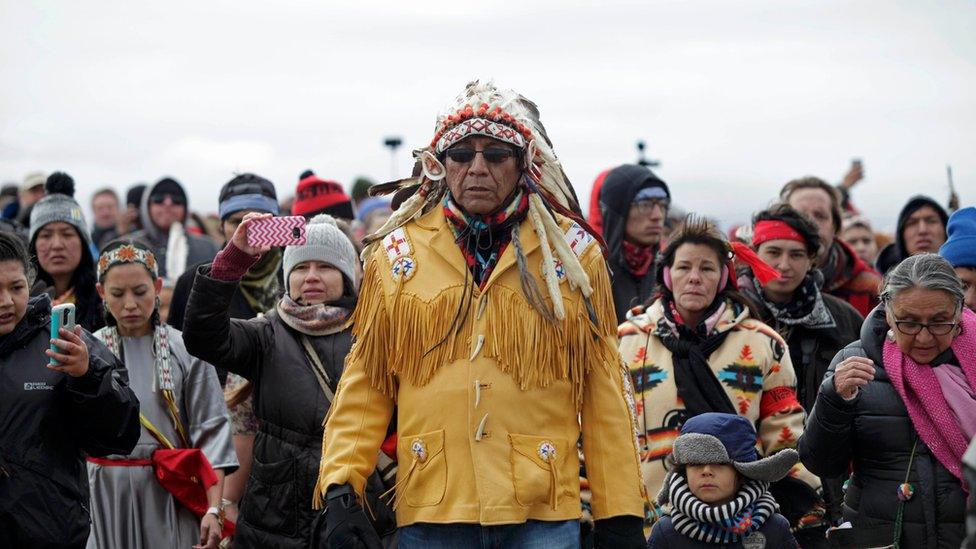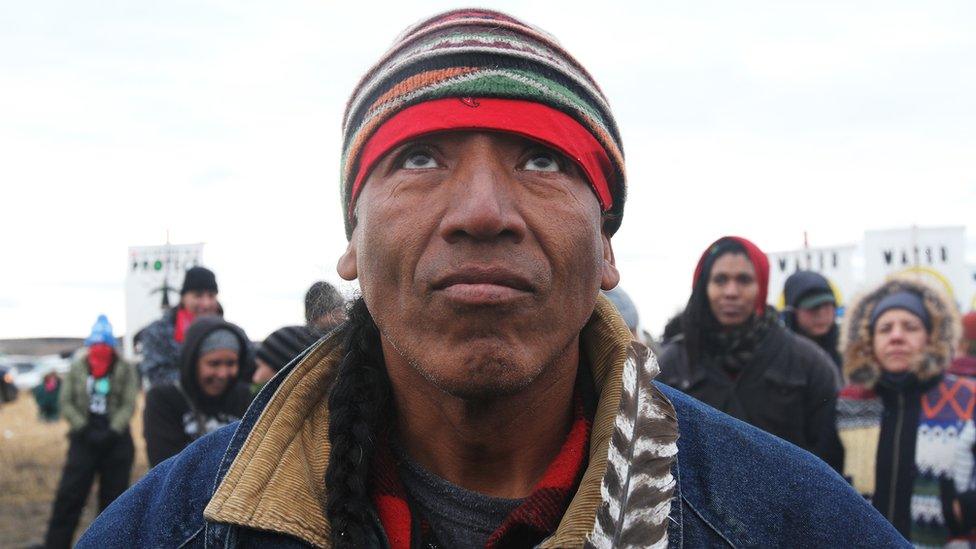Dakota pipeline protesters leave site after year-long occupation
- Published
Ten arrests were made after some demonstrators failed to leave the camp before the deadline
A year-long protest against an oil pipeline in North Dakota appears to be nearing its end, although several dozen have defied a deadline to leave.
Ten demonstrators who ignored requests to depart were arrested, and makeshift wooden structures were set ablaze.
A boy aged seven and a girl, 17, are being treated for burns following two explosions resulting from the fires.
A federal judge has rejected a request by two Native American tribes for an emergency order blocking the pipeline.
The two tribes say the $3.7bn (£2.8bn) pipeline creates a risk of water pollution and endangers sites they consider sacred.
The protest camp was located on federal land near the Standing Rock Sioux Reservation.
US President Donald Trump has signed an executive order authorising the Dakota Access Pipeline to proceed, arguing it will bring huge economic benefits.
When completed, by Dallas-based Energy Transfer Partners, the project will take oil through the Dakotas and Iowa to Illinois to be shipped.

What did protests achieve? James Cook, BBC North America correspondent
The battle of Standing Rock has been bitter to the end. Barring an eleventh-hour twist, the protesters - who call themselves water protectors - have lost their fight.
Smaller camps may remain but the oil looks certain to flow, perhaps as soon as a fortnight from now. However some demonstrators say they have succeeded in pricking the nation's conscience on two fronts.
First, by highlighting the abiding resentment of many Native Americans at the pillage of their land by the white man. And secondly, by showcasing the ultimate unsustainability of an economic system built on a thirst for oil.
Even if that is true, it has come at a cost.
Scores of people were injured; the state of North Dakota must pay a bill running into millions of dollars; and hundreds of protesters face criminal charges, some with the potential of lengthy jail terms.
Not only that but the protests have split the Standing Rock Sioux tribe and its supporters - as well as underlining, yet again, deep divisions in the wider United States.


There were emotional scenes as people left the camp
Earlier on Wednesday, about 150 people departed the camp for the last time as a deadline to leave the area approached.
About 25 to 50 people remain at the camp, authorities say.
Lt Tom Iverson said police would not enter the camp on Wednesday night.
At its peak in the autumn, the protest camp had thousands of people, but that has fallen to a couple of hundred in the last few weeks.
- Published7 February 2017

- Published5 December 2016
